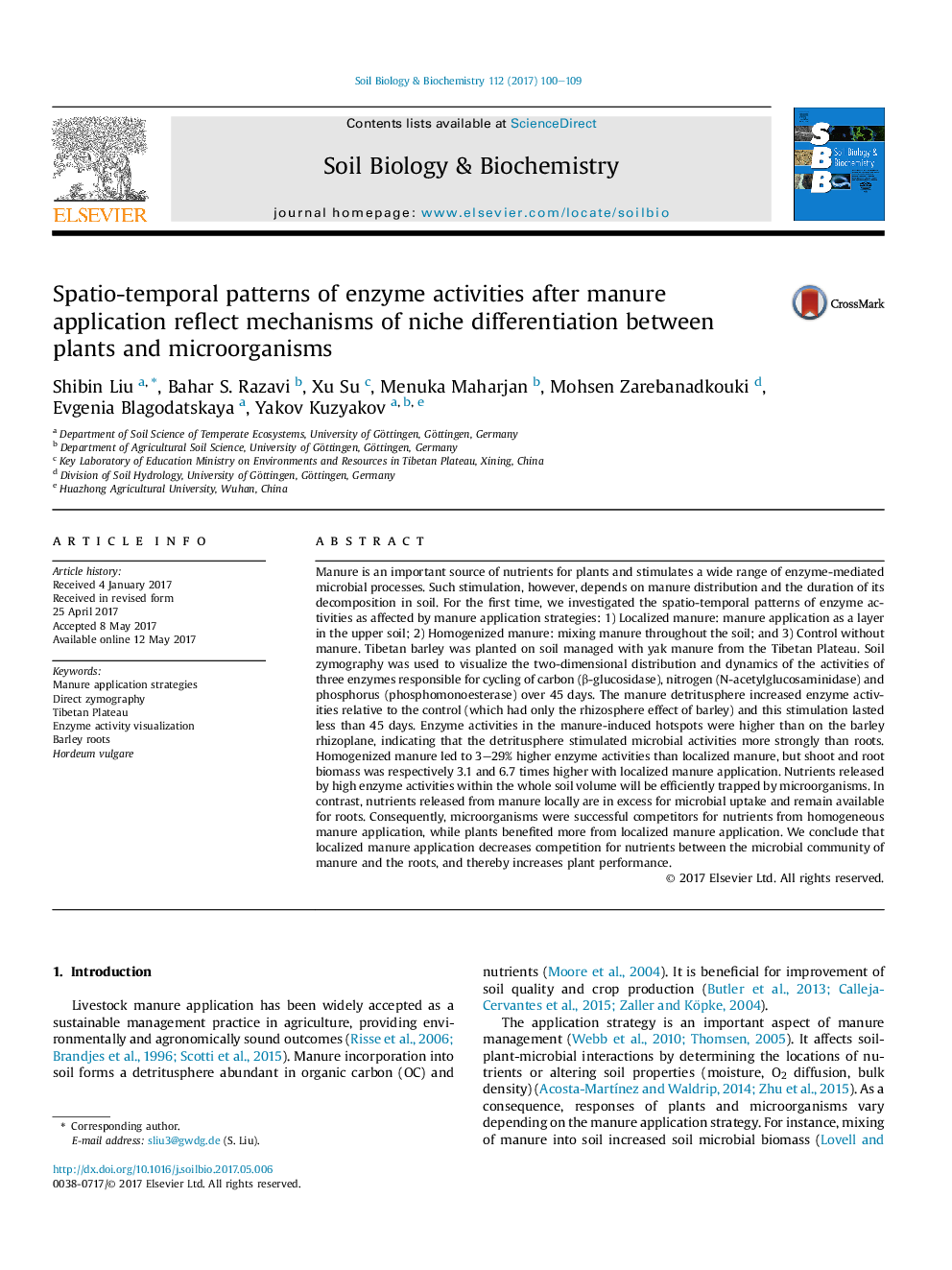| کد مقاله | کد نشریه | سال انتشار | مقاله انگلیسی | نسخه تمام متن |
|---|---|---|---|---|
| 5516341 | 1542572 | 2017 | 10 صفحه PDF | دانلود رایگان |
• Stimulation of enzyme activities by manure application lasted less than 45 days.
• Manure homogenized with soil led to higher enzyme activities than localized manure.
• Localized manure induced higher barley biomass than homogenized manure.
• Downward extension of enzyme activities from manure application zone differed between three enzymes.
• Enzyme activities in manure detritusphere were higher than on the root-soil interface.
Manure is an important source of nutrients for plants and stimulates a wide range of enzyme-mediated microbial processes. Such stimulation, however, depends on manure distribution and the duration of its decomposition in soil. For the first time, we investigated the spatio-temporal patterns of enzyme activities as affected by manure application strategies: 1) Localized manure: manure application as a layer in the upper soil; 2) Homogenized manure: mixing manure throughout the soil; and 3) Control without manure. Tibetan barley was planted on soil managed with yak manure from the Tibetan Plateau. Soil zymography was used to visualize the two-dimensional distribution and dynamics of the activities of three enzymes responsible for cycling of carbon (β-glucosidase), nitrogen (N-acetylglucosaminidase) and phosphorus (phosphomonoesterase) over 45 days. The manure detritusphere increased enzyme activities relative to the control (which had only the rhizosphere effect of barley) and this stimulation lasted less than 45 days. Enzyme activities in the manure-induced hotspots were higher than on the barley rhizoplane, indicating that the detritusphere stimulated microbial activities more strongly than roots. Homogenized manure led to 3–29% higher enzyme activities than localized manure, but shoot and root biomass was respectively 3.1 and 6.7 times higher with localized manure application. Nutrients released by high enzyme activities within the whole soil volume will be efficiently trapped by microorganisms. In contrast, nutrients released from manure locally are in excess for microbial uptake and remain available for roots. Consequently, microorganisms were successful competitors for nutrients from homogeneous manure application, while plants benefited more from localized manure application. We conclude that localized manure application decreases competition for nutrients between the microbial community of manure and the roots, and thereby increases plant performance.
Figure optionsDownload high-quality image (146 K)Download as PowerPoint slide
Journal: Soil Biology and Biochemistry - Volume 112, September 2017, Pages 100–109
